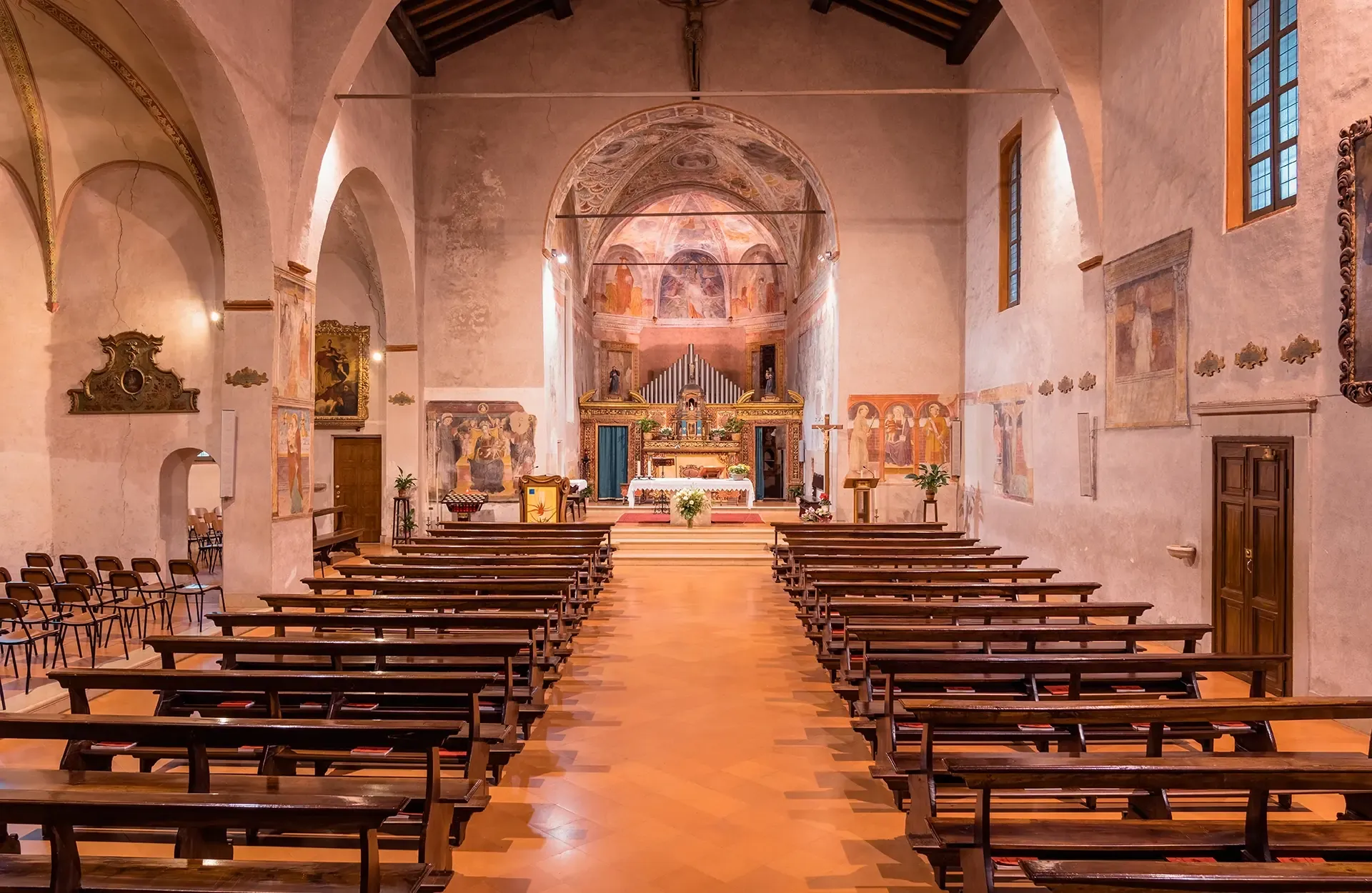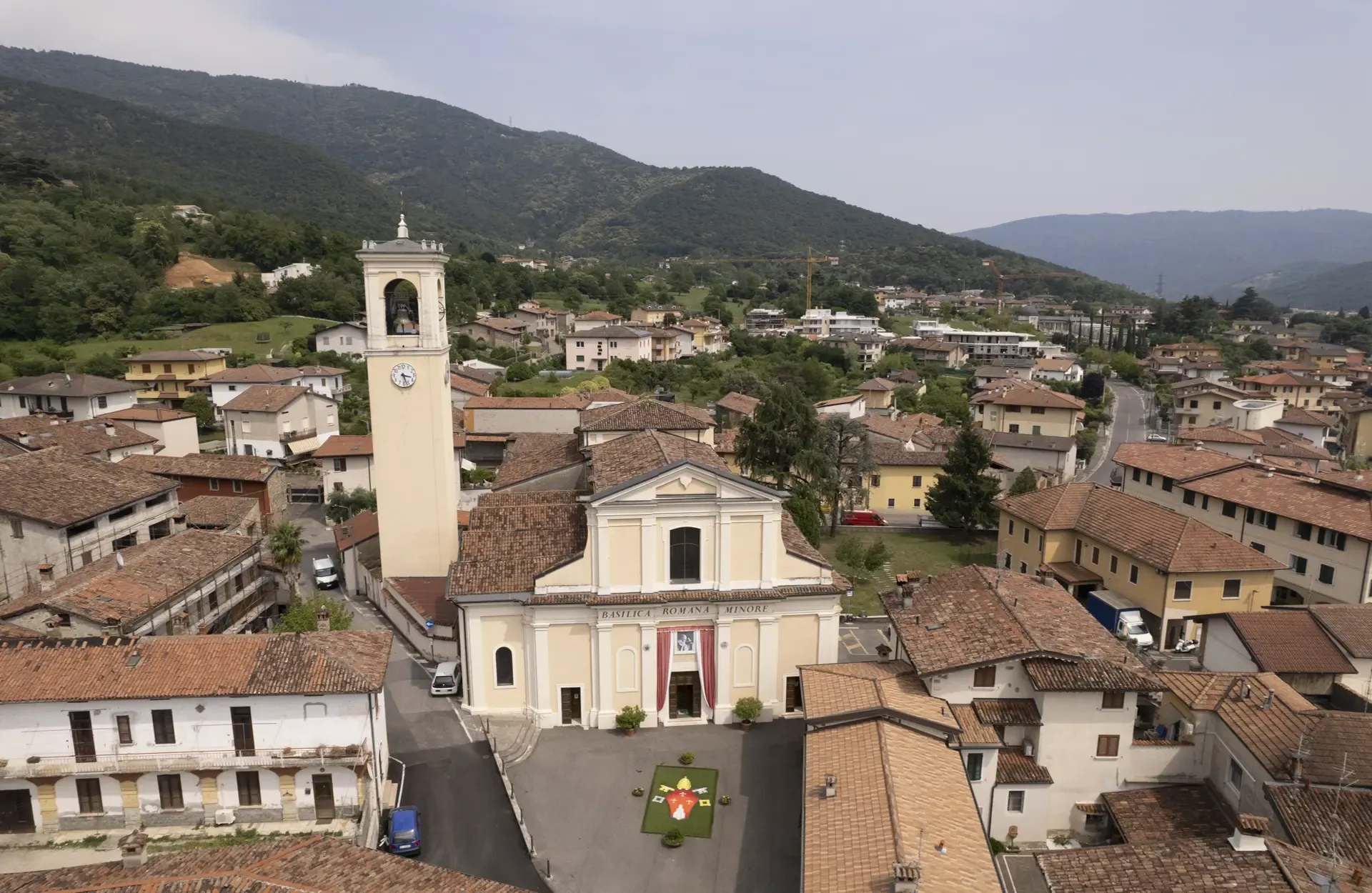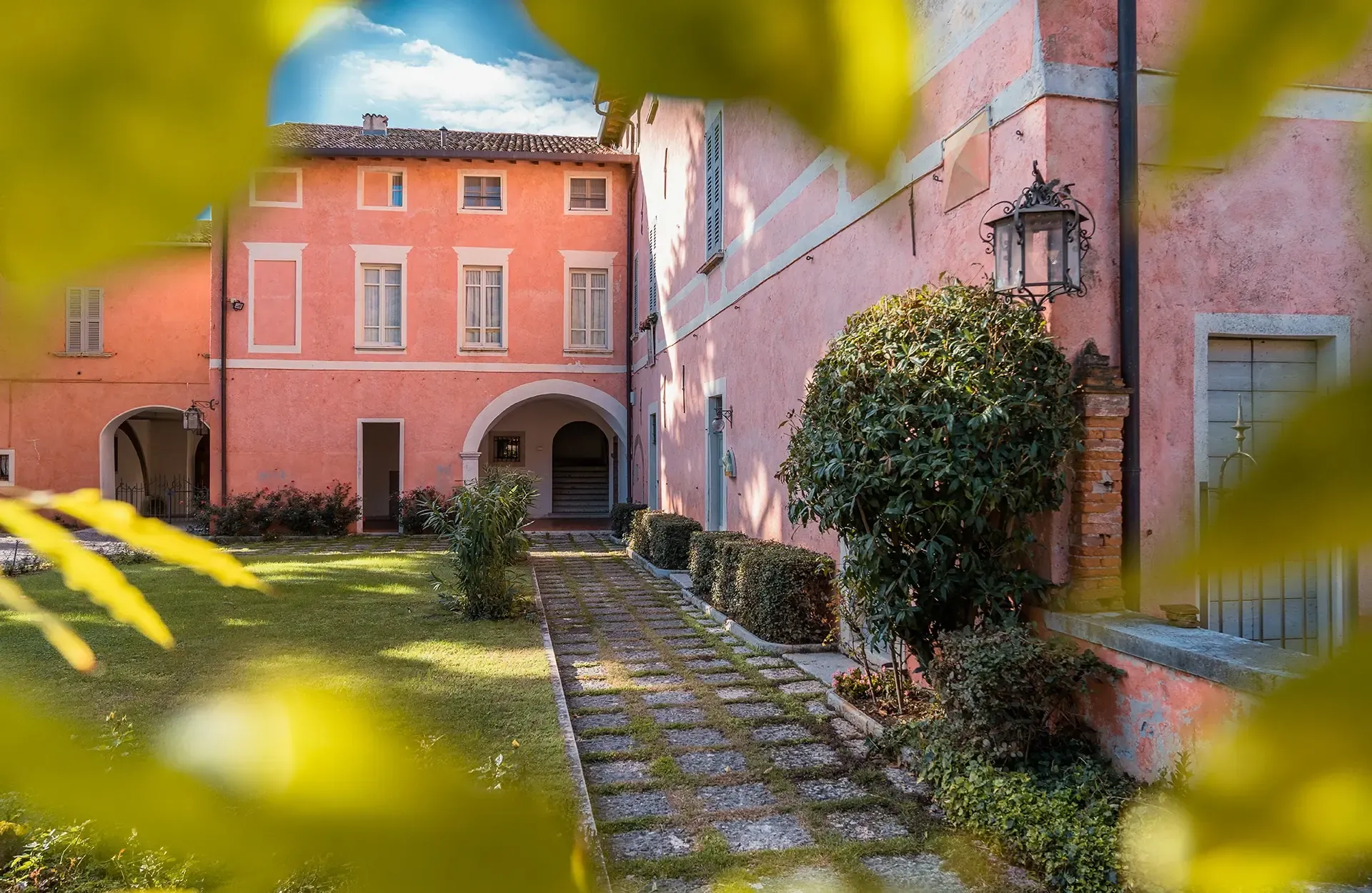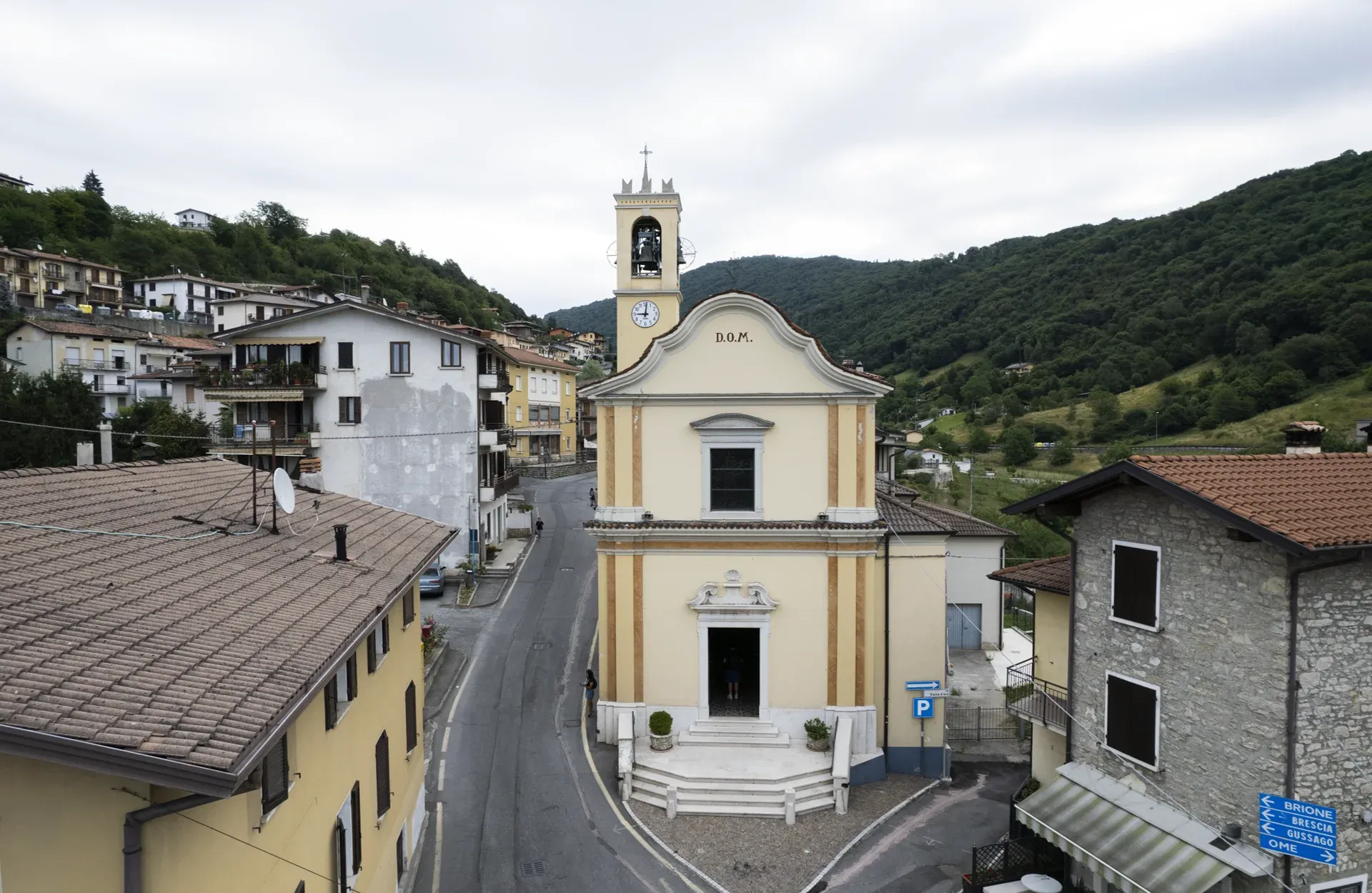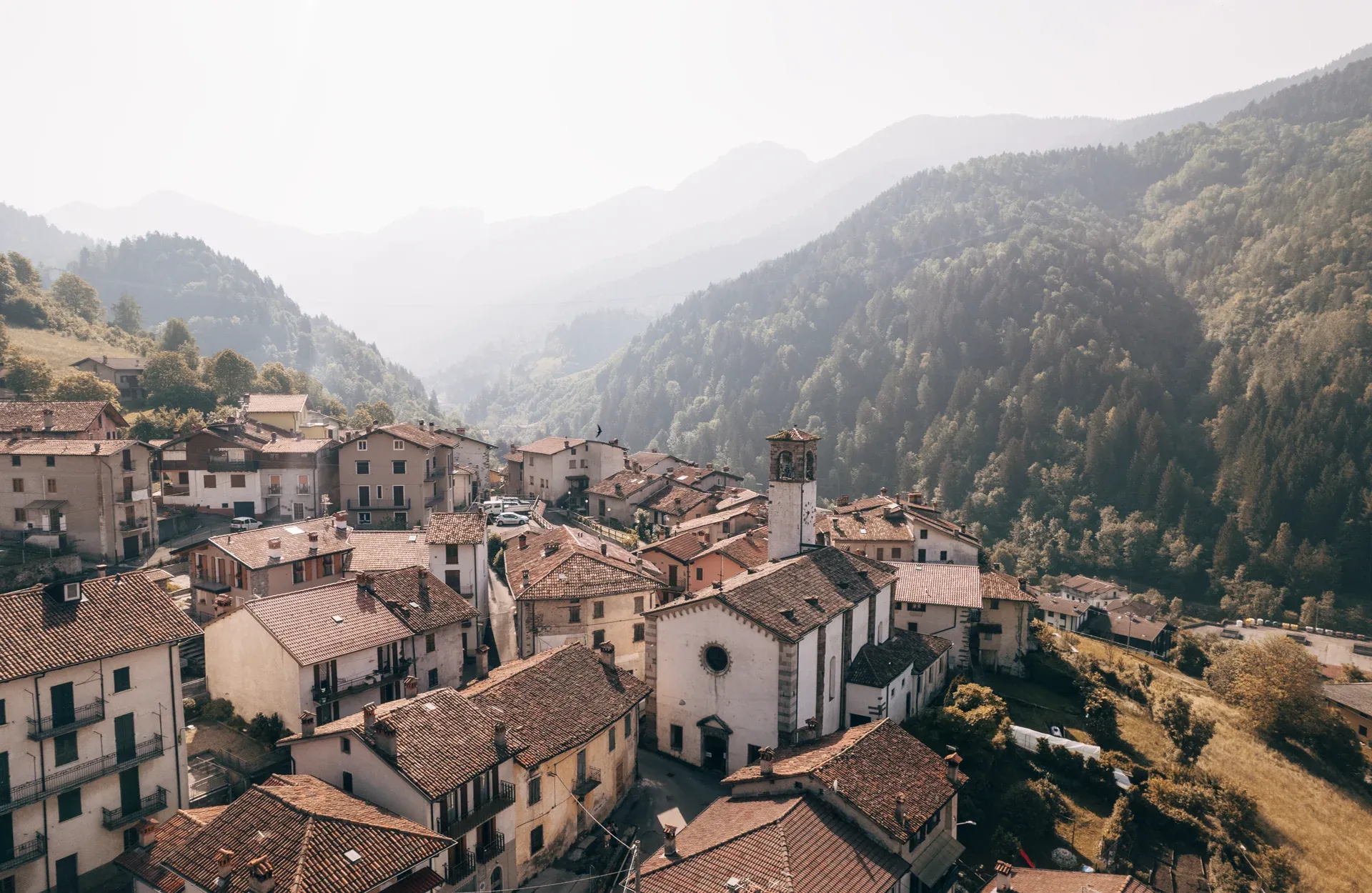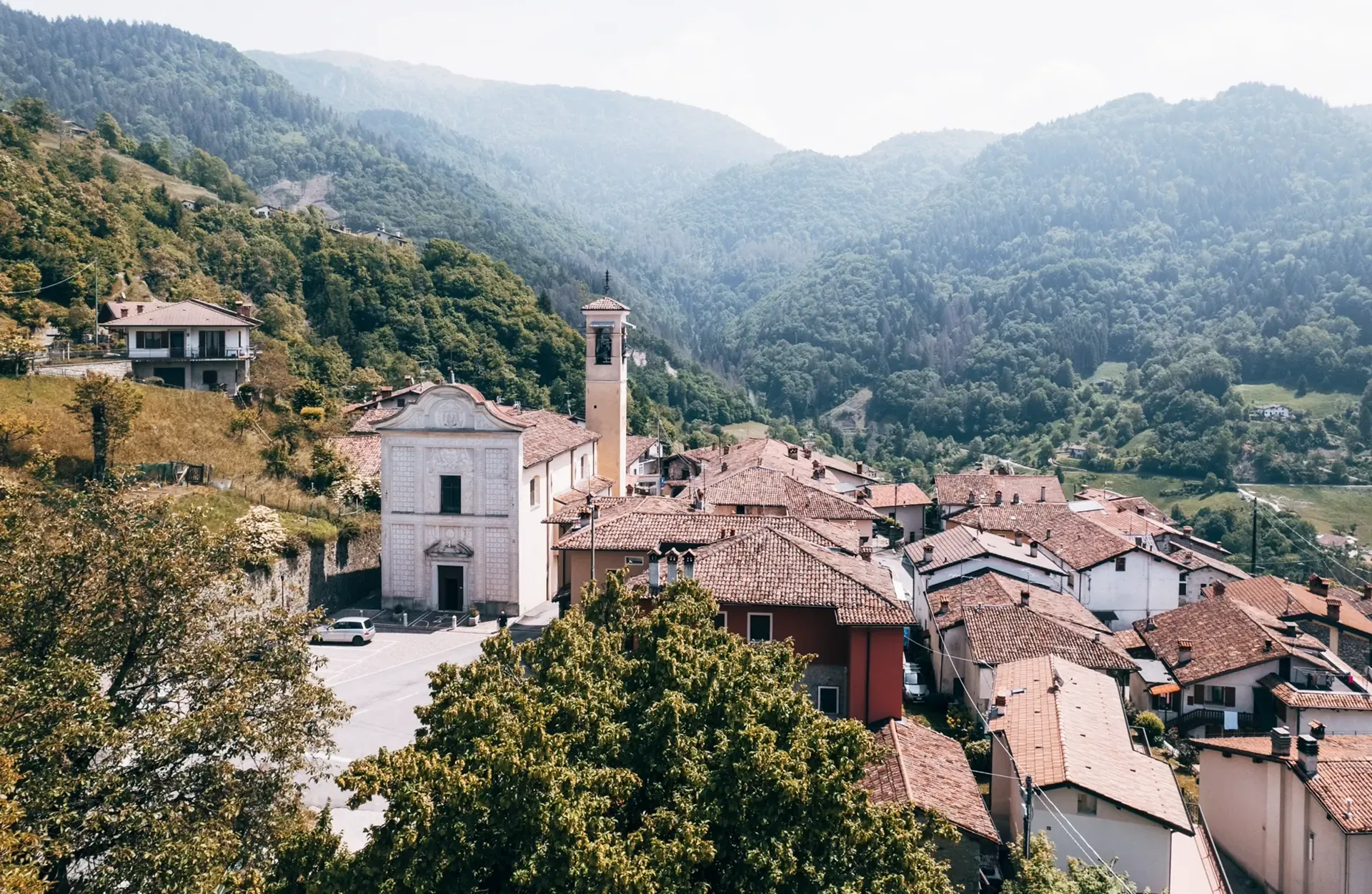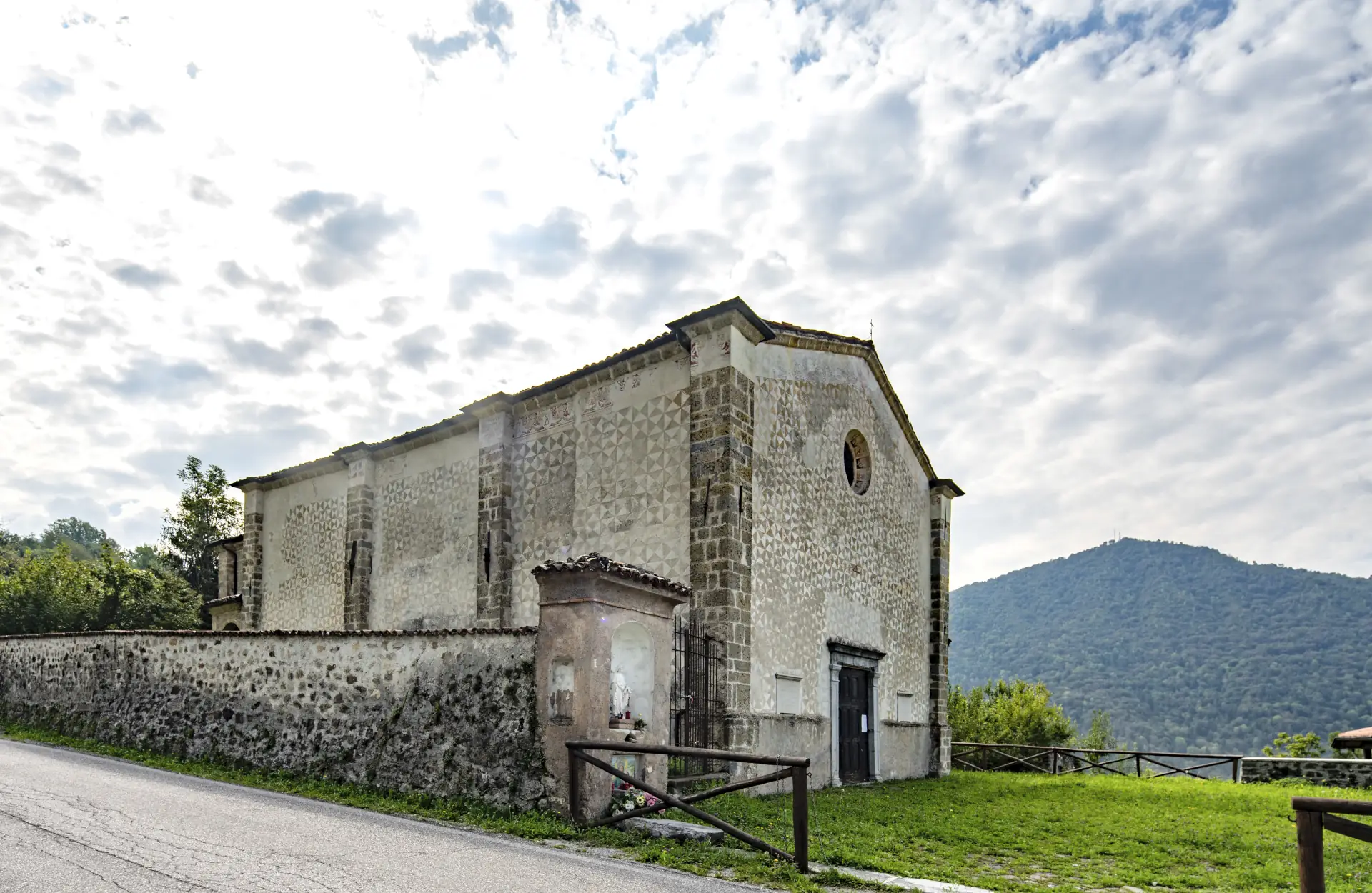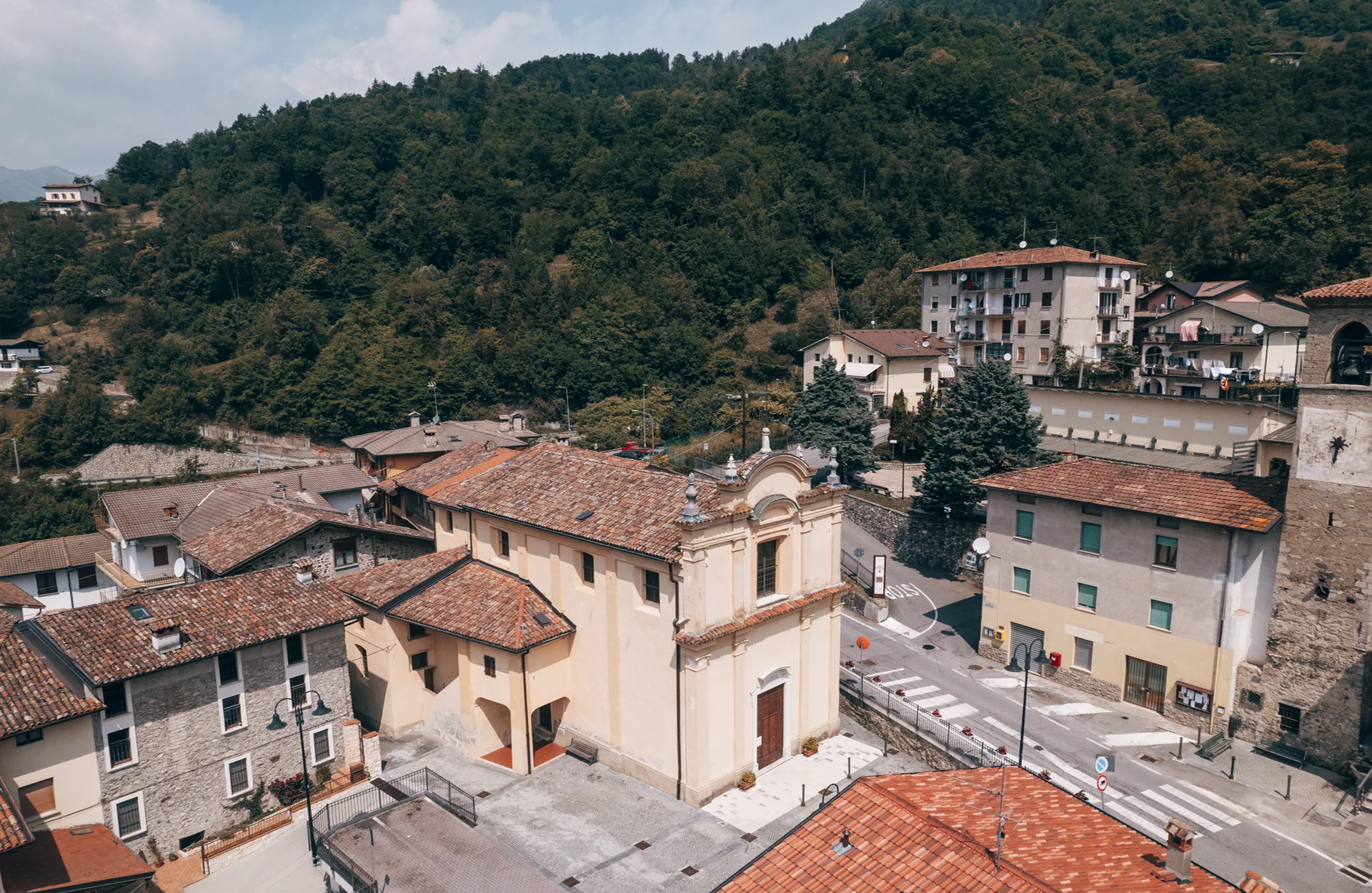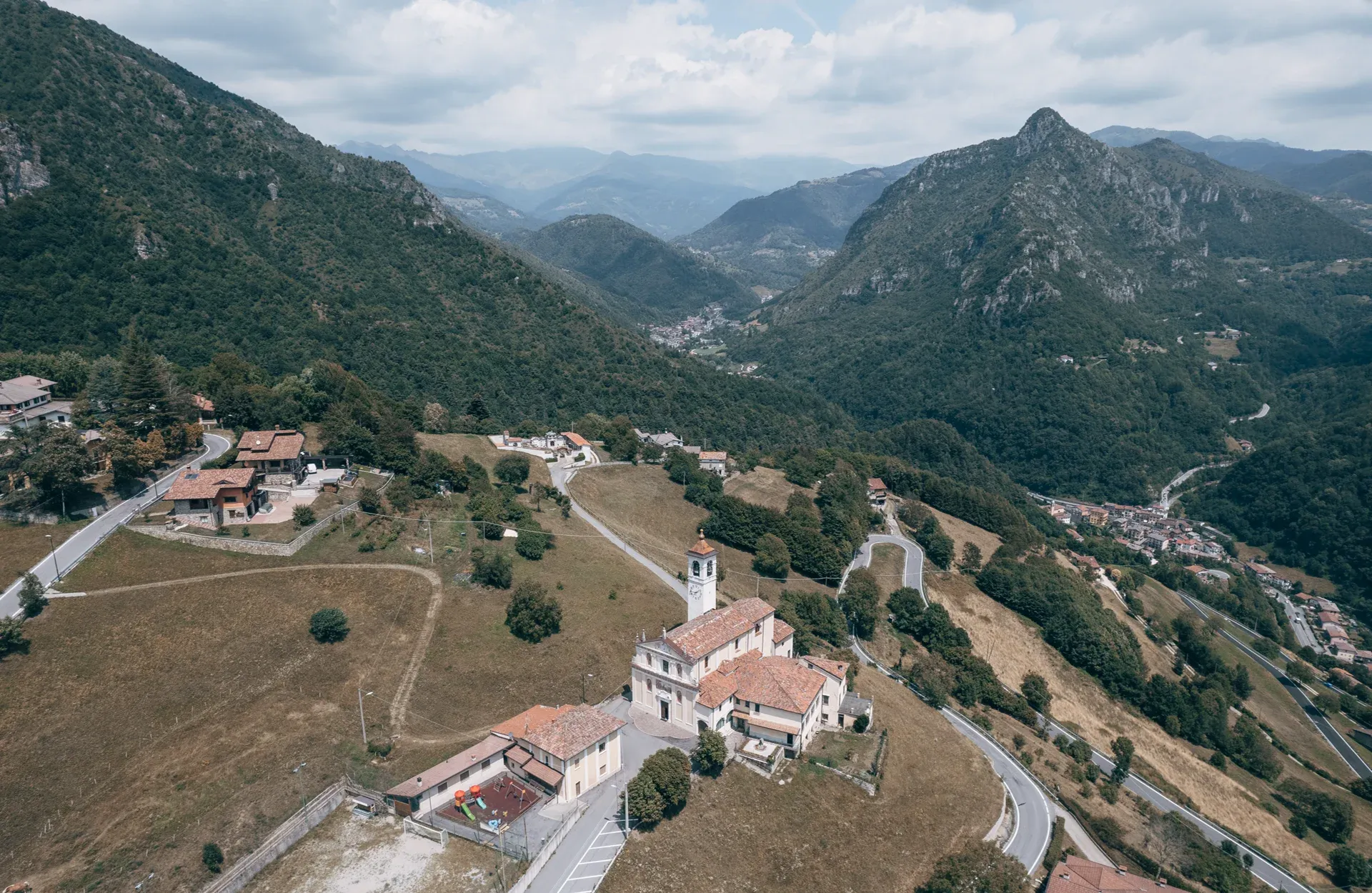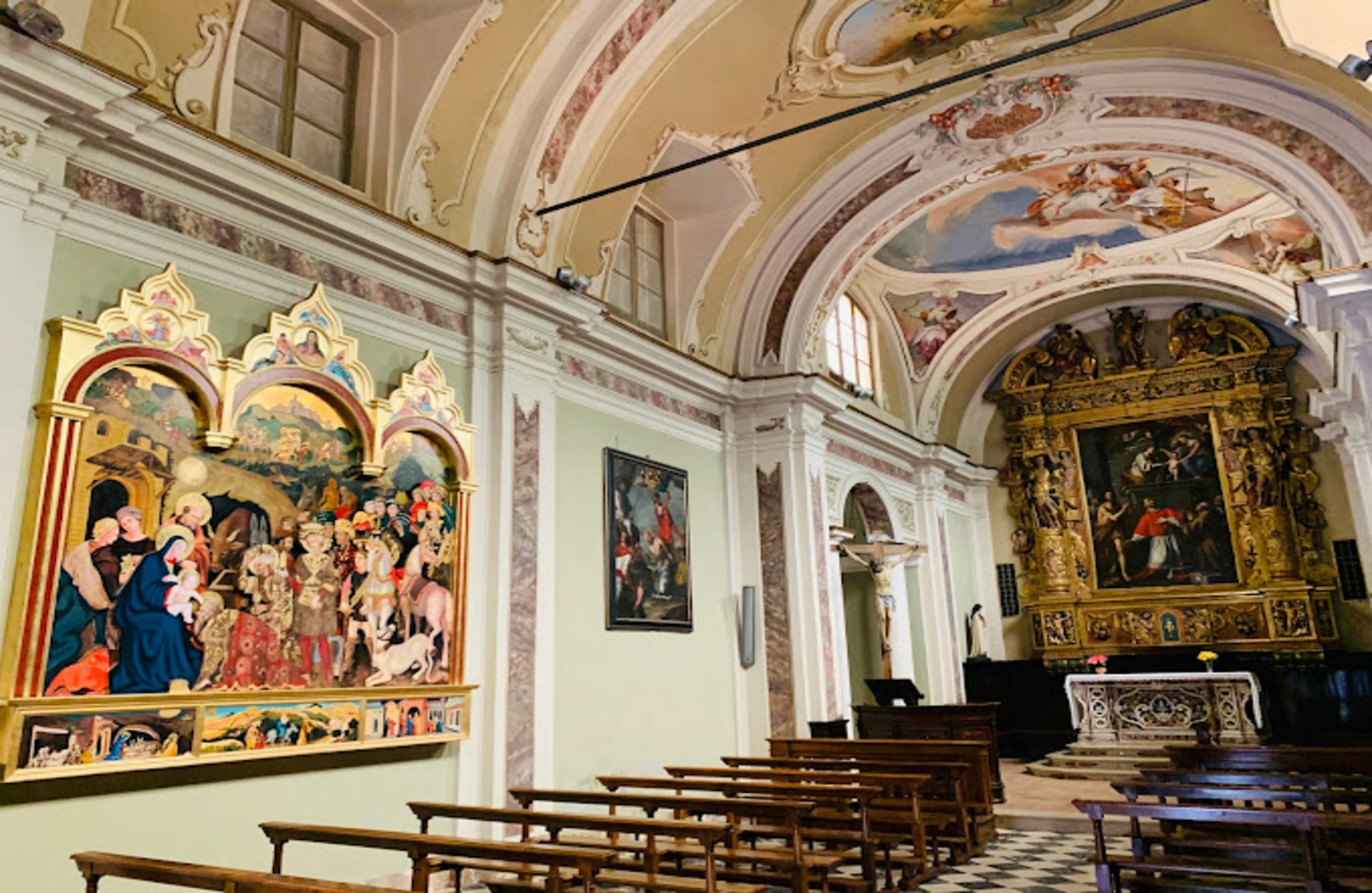For lovers of local history and culture, Valle Trompia offers a journey full of discoveries, starting with the traditional Iron and Mine Route, passing through the archaeological museums, the historic villas and palazzos, as well as the Paul VI collection of contemporary art and the Sacred Route, without forgetting the farming and peasant tradition. A territory with a thousand faces, all to be discovered and explored.
The complex, which includes the basilica and the adjoining convent of the Friars Minor of the Observance, was built at the behest of St Bernadine of Siena thanks to a donation made by the noble Avogadro family of Zanano in 1442. The interior of the building, which was consecrated on 29 September 1513, consists of a single large nave and ...
The Minor Roman Basilica of saints Antonino Martire and Pope Paul VI, also known as the "Pieve di Concesio" is dedicated to the Assumption of the Virgin Mary and only later to San Antonino Martire of Piacenza. It was founded around the 9th century and consecrated on 19 August 1540. Monsignor Vincenzo Antonini, sent by Cardinal Carlo Borromeo, describes it ...
Inaugurated in 1979 as a monument dedicated to the 11 victims of mining accidents and the 30 who died of silicosis, the Chapel of Santa Barbara was designed by surveyors Dario Piotti and Tiziano Fontana. It comprises an underground passage of Valtrompia stone with a statue of St. Barbara in the centre and the inscription "Marmentino ai suoi minatori" (Marmentino ...
Discover the home of Pope Paul VI! On 15 August 1997, during the feast of the Assumption of the Blessed Virgin Mary, Vittorio Montini, Paul VI's cousin, died suddenly in Concesio at the age of 88. With a testamentary bequest, he left the house in Concesio and the adjacent area, owned by him, and where Giovanni Battista Montini was born ...
The Parish Church of Saints Faustino and Giovita was built from 1633 onwards on pre-existing medieval structures and was consecrated in 1652. The project was entrusted to Giovanni Battista Lantana, who in 1604 also designed, while still in his twenties, the Duomo Nuovo of Brescia. Lantana died in 1627 and unfortunately did not see the completion of the church. The ...
The Church of Saints John the Baptist and Rocco, in the locality of the same name, dates back to the 16th century, but repeated extensions and renovations have changed its original layout and style. Alongside works and paintings from the last century, however, the church preserves a statue of Saint Rocco and an altarpiece depicting the Madonna and Child.
In the small village of Tizio stands the 15th-century sanctuary dedicated to Santa Maria Assunta, destroyed by fire in 1697, then rebuilt and embellished with an altarpiece by the painter Giuseppe Nuvolone, an exponent of the 17th-century Lombard school.
The parish church of Irma, dedicated to the Holy Trinity and consecrated in 1674, was built on a pre-existing 15th-century chapel following disputes that arose between the people of Irma and Magno in order to ensure adequate religious service. Both the graffiti decoration on the façade, which features Saints Peter and Paul in the upper register surmounted by the Holy ...
The Church of San Lorenzo Martire stands isolated on a large embankment. It lies within the territory of the hamlet of Magno di Bovegno, known in ancient times as Magno San Lorenzo, and borders the Municipality of Irma, whose parish church it was for a long time. The church presents itself in its clean proto-Renaissance style, characterised by a geometric ...
The Church of San Rocco was built to the south of the previous 15th-century chapel of San Sebastiano, of which the late Gothic bell tower remains. Construction of the temple was rapid, in fact, it was completed in 1736, after only four years. The façade is linear and elegant with a curious central curvilinear shape. Worth noting is the 18th-century ...
The church of San Calocero is the parish church of Cimmo. Mentioned as far back as 1302, it depended on the parish of Bovegno and became a parish church in the 15th century. The current building is the result of extensions and alterations that took place in the early 1700s. The decoration with stuccoes and frescoes is attributed to Pietro ...
Work on the building began in 1634 and was only completed in 1706 with the onion-shaped bell tower. In 1748, the side chapel of San Gaetano was opened, in 1756 the high altar was installed thanks to a generous bequest, and in 1773 Pietro Scalvini painted the frescoes in the dome celebrating the glory of San Carlo with annexed cardinal ...

